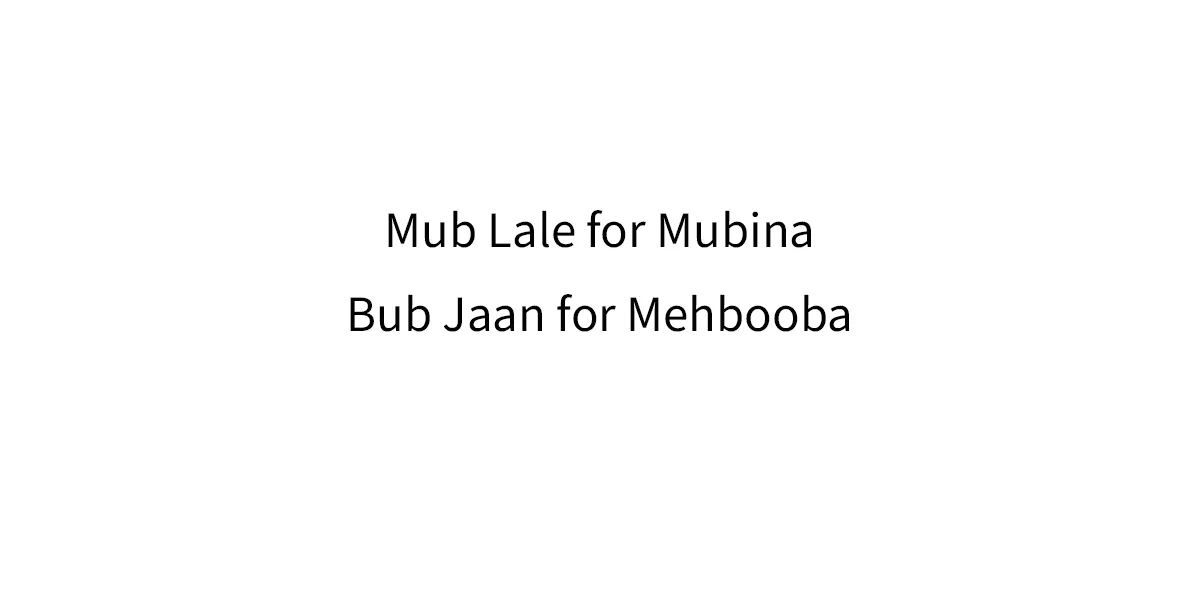Kashmiri Culture
The Art of Kashmiri Nicknames: When Names Become Stories
In Kashmir, names rarely remain what they were at birth. Every household seems to nurture a quiet, creative rebellion against formality — where Shamima turns into Sham Taeth, Fatima becomes Phote Lale, and Yasmeen is affectionately called Yose.
This is not mere abbreviation. It’s art — a tradition that blends affection, humor, and a deep sense of belonging. Whether one lives in Srinagar or Shopian, every family tree carries a hidden layer of names — nicknames that speak of love, childhood memories, and sometimes, gentle mockery.
A Culture of Reimagined Names
Kashmiris have long turned full names into melodic, localized versions. What might sound like “butchering” elsewhere is, in Kashmir, an expression of intimacy.
Some classic examples include:
- Mub Lale for Mubina
- Khaeje Taeth for Khatija
- Shoge Lale for Shugufta
- Bub Jaan for Mehbooba
- Rube for Rabiya
- Tase Lale for Tasneem
Then there are the universal favourites — Baby, Fairy, Pinky, Gasha, Bunty, Bitty, and Kuka — nicknames that have outlived generations and refuse to fade, no matter how modern a family becomes.
The Logic of the Heart
To an outsider, these variations might sound random, but for Kashmiris, they carry sentiment. A name given in childhood — even if born from a mispronunciation — becomes permanent, passed lovingly through decades. It’s not unusual for a sixty-year-old to still be called Baby Aunty or Bitty Ji.
In many families, a single slip of the tongue by a toddler or elder can rename someone for life. Once a nickname is born, it becomes sacred. It’s less about grammar and more about memory.
When Geography Becomes Identity
Kashmir’s naming creativity extends beyond individuals to locations. A relative living in Kerala might forever be called Kerala Aunty, while someone from Muscat becomes Masie Aunty. These names, though informal, serve as affectionate geographical markers — identity by association.
The Era of Alphabets
In recent years, the nickname culture has evolved with the times. Abbreviations and alphabetic nicknames — AG, GG, CP, DC, or CC — have replaced the lyrical Lales and Jaans in some families. The essence, however, remains the same: a name must feel personal, not official.
The Saebs and the Jaans
Kashmiri naming etiquette also carries an interesting gendered charm. Girls are often affectionately suffixed with Jaan (meaning “dear” or “soul”), while boys are given the title Saeb (a local form of “Sir”).
So a little girl becomes Rube Jaan and a baby boy Ayaan Saeb — a linguistic ritual that begins at birth and never truly ends.
Between Affection and Irony
Names in Kashmir often reveal more than affection. They reflect subtle layers of family dynamics, humor, even social hierarchies. Some names carry the mark of respect, others hint at teasing familiarity. Yet all share one thing in common — they make relationships feel closer, softer, and real.
More Than Just Words
At its core, this culture of nicknaming is a mirror of Kashmir’s emotional warmth. It shows how deeply personal relationships are woven into language itself.
A Kashmiri name isn’t just an identifier — it’s a story, a bond, and a piece of heritage whispered from one generation to another.
Because in Kashmir, you aren’t truly loved until someone, somewhere, renames you.

